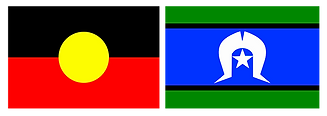
Country
Dreaming Stories
Outcome
English: Stage 2 Objective D Expressing themselves
Outcome: responds to and composes a range of texts that express viewpoints of the world similar to and different from their own EN2-11D
-
respond to and appreciate how Dreaming stories form part of an oral tradition for Aboriginal and Torres Strait Islander people

Story sharing - students share their experience of very old stories and explore a Dreaming story
About The Dreaming
"For Aboriginal People the Dreaming refers to a number of things. In one sense it is the creation period (a time beyond human memory) when ancestral beings spread across the continent, creating all of the plants, animals and humans, establishing societies and entrusting them with the Law - the rules for living, languages, customs and ceremonies... The Dreaming is also the 'everywhen', embracing the past, present and future. It is an enduring life-force, even though individuals come and go and lives change." (Pascoe, 2012, p.8).
Creation stories, also referred to as Dreaming stories, differ from people to people and are vital tools in teaching our children their culture and responsibilities...
The Rainbow Serpent features in the Dreaming stories of many mainland Aboriginal nations, particularly in the north of Australia, where it features in the logo of the Northern Land Council. It is known to both protect its people and also punish those who break the law." (Pascoe, 2012, p.8).
"The Dreaming is a complex concept that embraces all aspects of Aboriginal cultures and societies. While the Dreaming is seen as Aboriginal spirituality, a more appropriate and complete definition is 'the essence of being Aboriginal'.
Defining the Dreaming as 'Aboriginal religion' is an attempt to place it in a non-Aboriginal or Westernised framework. This does not capture the holistic sense of the word... Aboriginal spirituality is based on connectedness, belonging and a sense of being." (Lucashenko, 2011, p.24).
An article by Christine Nicholls from The Conversation 23rd Jan 2014 'Dreamtime’ and ‘The Dreaming’ – an introduction gives a more detailed introduction to the Dreaming.
Augadth/Zogo Time
"Augadth/Zogo time refers to all that is known and understood by Torres Strait Islander People about the origins of the environment, themselves and their culture. Essentially it represents the creation history of the Torres Strait Islander People." (Lucashenko, 2014, p. 31).
How to use Dreaming Stories
"Writing Dreaming stories is a popular activity with many teachers and students, but I remain unconvinced that they constitute a useful method of teaching non-Aboriginal children to understand Aboriginal people. Dreaming stories are not fiction and yet they are often treated as such. This is because most non-Aboriginal people do not understand how real these stories are to the Aboriginal people who own and tell them in order to pass on their history and culture to the children". (Harrison, 2011, p. 189).
Activity
Ask students to think of the oldest story they can think of (they might think of Bible stories or ancient myths). Ask them why they think these stories have lasted for so long e.g. they have important messages or they are part of our beliefs.
Explain to the students that different Aboriginal Peoples have their own stories that are passed on from generation to generation through storytelling, ceremonies, dance and artworks. Some of these stories relate to the Dreaming (use some of the quotes above to help explain the Dreaming). The stories often have many levels of meaning just as Bible stories do.
Choose one of the stories below to share with students or find one from another source (find something local if possible). Identify where the story is from and which Aboriginal People it belongs to. Share details about the Aboriginal People with the students. Show them the land that the story relates to (use a map and pictures). Identify the meaning and correct pronunciation of any Aboriginal words in the text. Share the story with students. Ask them about the purpose of the story. What sort of qualities do the characters in the story show? What does the story teach us about Aboriginal life and society?

Students can view animated Dreaming stories at the Dust Echoes website. The website also includes study notes for teachers.
This is my Word by Ngay janijirr ngank includes a number of Dreaming stories from the Nyul Nyul people.
Page 25 Looloolool and the seagulls
Page 35 Binyin jabal, the duck story
Page 57 Galalang and Mino page
The Sharing Stories series includes a number of Dreaming stories from different Aboriginal Peoples.
Plenty Stories series. Each book looks at a different Aboriginal People and includes a Dreaming story and some information about ceremonies and beliefs.
Mad Magpie (2016) is the third in a series of stories by Gregg Dreise. The books are morality tales rather than Dreaming stories, but are inspired by stories the author heard from elders in his community.



